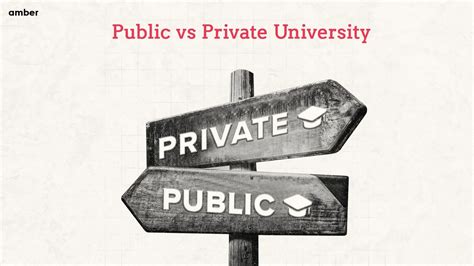Choosing the right university is a pivotal decision that can shape one’s future. Public and private universities offer distinct advantages and drawbacks, and understanding their differences is crucial for making an informed choice.

Key Factors to Consider
1. Tuition and Fees
- Public universities typically charge lower tuition and fees than private institutions, especially for in-state students.
- According to the College Board, the average tuition and fees for an in-state student at a public four-year university in 2022-2023 were $9,970, compared to $38,070 for a private non-profit institution.
- Private universities often offer scholarships and financial aid to offset the higher costs.
2. Academic Quality
- Both public and private universities can offer excellent academic programs.
- The U.S. News & World Report’s 2022-2023 rankings include several public universities among the top 100, such as the University of California, Berkeley (ranked 11th) and the University of Michigan, Ann Arbor (ranked 22nd).
- Private universities often have smaller class sizes and more research opportunities.
3. Student Life and Campus Culture
- Public universities tend to have larger student bodies and a more diverse student population.
- Private universities often offer a more intimate campus experience with a strong sense of community.
- Both public and private universities provide a range of extracurricular activities, clubs, and organizations.
4. Location and Size
- Public universities are often located in urban areas with access to cultural and professional opportunities.
- Private universities can be located in various settings, from urban to rural.
- The size of the university can influence the availability of resources and the overall student experience.
Advantages and Disadvantages
Public Universities
Advantages:
- Lower tuition and fees
- In-state scholarships
- Larger and more diverse student bodies
- Access to urban centers
Disadvantages:
- Larger class sizes
- May have less funding for research
- Can be more bureaucratic
Private Universities
Advantages:
- Smaller class sizes
- More research opportunities
- Higher graduation rates
- Strong campus communities
Disadvantages:
- Higher tuition and fees
- Less accessible for low-income students
- May offer fewer undergraduate programs
Making the Decision
Choosing the right university depends on individual preferences and circumstances. Students should consider their financial situation, academic goals, desired campus experience, and future career aspirations.
Effective Strategies for Choosing:
- Visit both public and private universities to get a first-hand experience.
- Research the academic programs, faculty, and student life of each university.
- Calculate the total cost of attendance, including tuition, room and board, and other expenses.
- Contact the financial aid office to explore scholarship and loan options.
Common Mistakes to Avoid:
- Choosing a university solely based on prestige or affordability.
- Not considering the academic fit and campus culture.
- Underestimating the total cost of attendance.
- Overlooking financial aid opportunities.
FAQs
1. Which type of university is right for everyone?
There is no one-size-fits-all answer. The best university depends on the individual’s needs and preferences.
2. Are public universities always cheaper than private universities?
Yes, but there are exceptions. Some private universities offer scholarships and financial aid that can offset the higher costs.
3. Is academic quality better at private universities?
Not necessarily. Both public and private universities can offer excellent academic programs. Rankings and research opportunities should be considered.
4. Do public universities have fewer extracurricular activities?
No. Public universities typically have a wide range of extracurricular activities, clubs, and organizations.
5. Do private universities have smaller student bodies?
Yes. Private universities often have smaller student bodies and a more intimate campus experience.
6. Can low-income students afford to attend private universities?
Yes, but it may require applying for financial aid, scholarships, and loans.
Conclusion
Choosing between a public and private university is a complex decision. By considering the key factors, advantages, and disadvantages discussed in this article, students can make an informed choice that will support their academic, personal, and professional goals.
